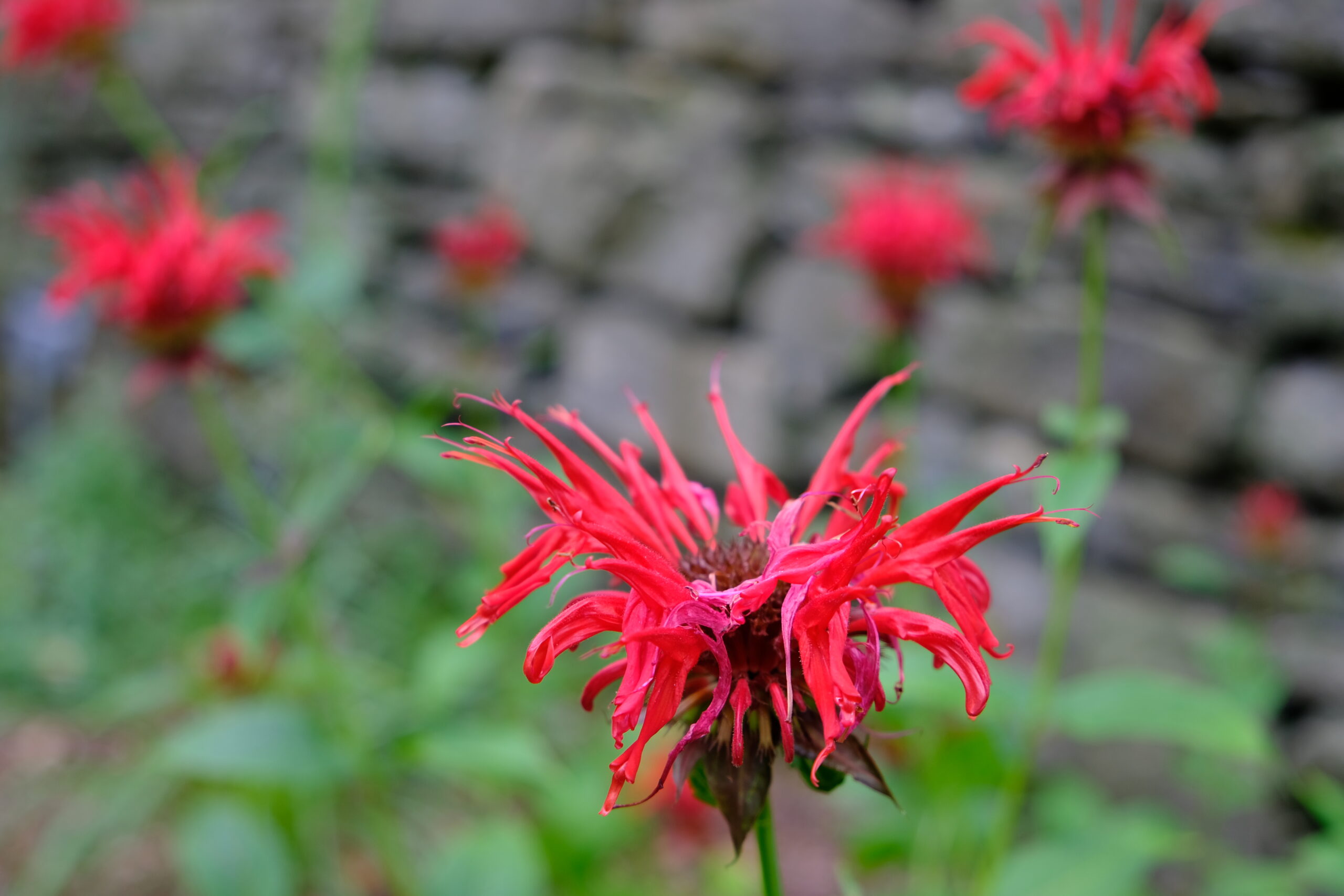Asclepias tuberosa (Butterfly Milkweed)
Bloom Time: June to August
Sun Requirement: Full Sun
Water Requirement: Low to Medium
Wildlife: Host plant for the Monarch Butterfly and a nectar source for many pollinators
Tolerates: Drought and deer tolerant
Native to North America: Yes
Zones: 3 to 9
Other: Milkweed is a very showy native wildflower that grows in a clump and produces clusters of bright orange flowers. They have a long bloom period from late spring throughout the summer.
Location: Howe Garden

Actaea racemosa (Black Cohosh)
Bloom Time: June to July
Sun Requirement: Part Shade to Full Shade
Water Requirement: Medium
Wildlife: Attracts bees, beetles, and butterflies.
Tolerates: Rabbit
Native to North America: Yes
Zones: 3 to 8
Other: Black Cohosh typically grows four to six feet tall and has small, numerous creamy white fragrant flowers that appear in long fluffy spires. Its a great perennial to add architectural height to a shade garden.
Location: Herb Garden
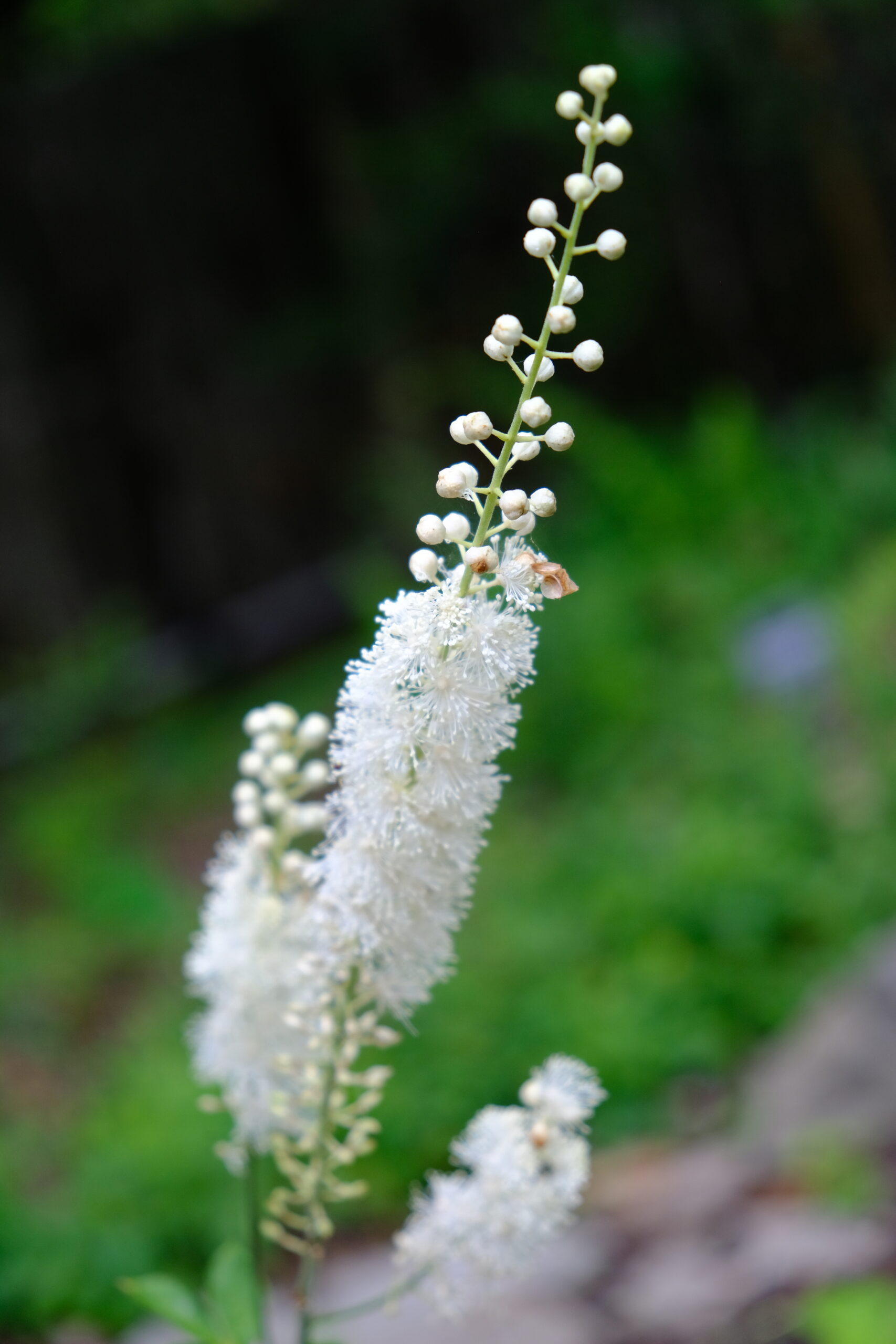
Liatris spicata (Dense Blazing Star)
Bloom Time: June to August
Sun Requirement: Full Sun
Water Requirement: Medium
Wildlife: Attracts birds and butterflies
Tolerates: Tolerates drought and clay soils
Native to North America: Yes
Zones: 3 to 8
Other: This plant’s showy fluffy, deep purple vertical flower spikes add a pop of color to any garden. It is easy to grow and low maintenance, and it is great as a fresh cut-flower or in dried arrangements.
Location: Bracken Foundation Children’s Garden
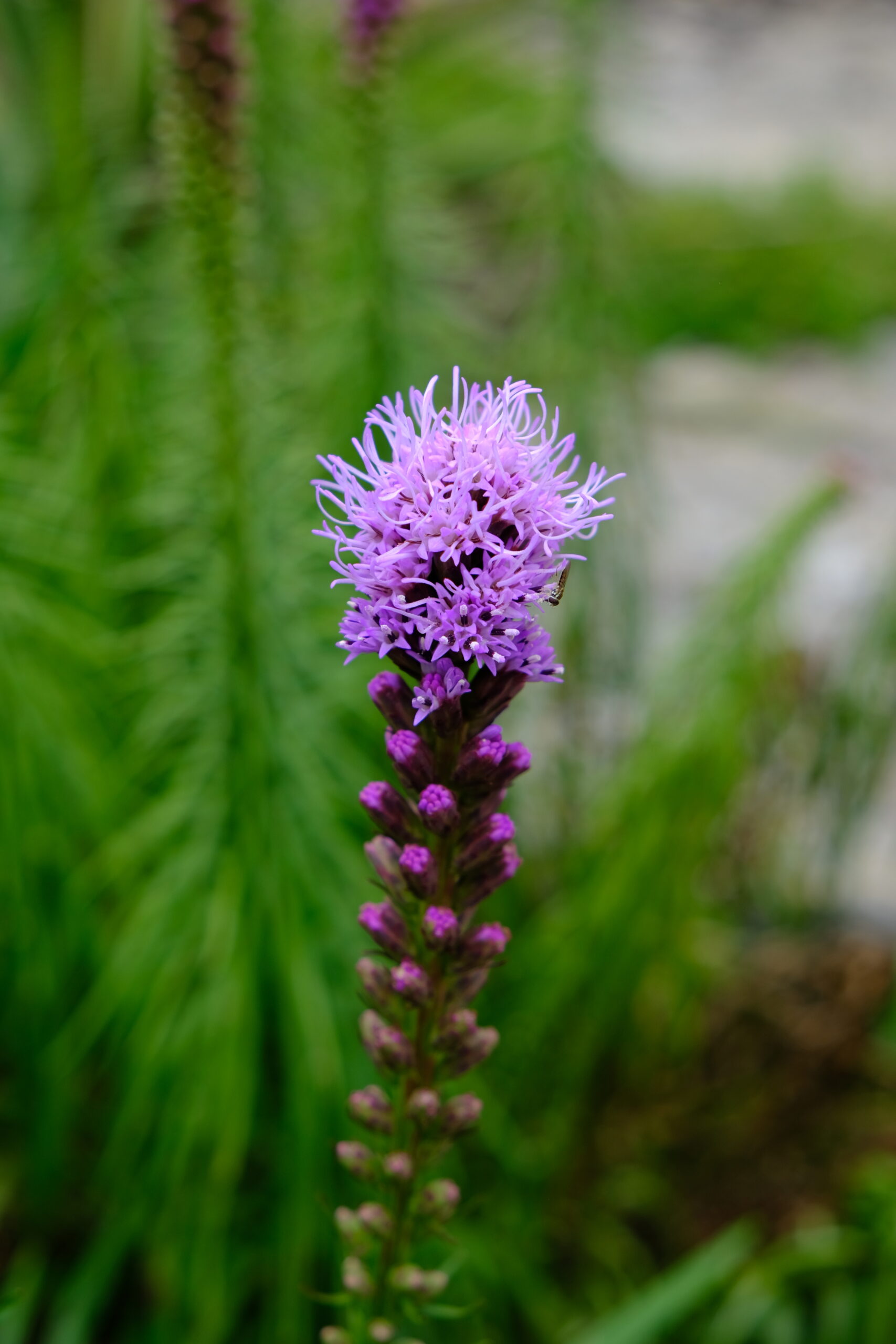
Rudbeckia maxima (Giant Coneflower)
Bloom Time: June to August
Sun Requirement: Full Sun
Water Requirement: Low to Medium
Wildlife: Attracts birds, especially gold finches, as well as butterflies
Tolerates: Drought and deer tolerant
Native to North America: Yes
Zones: 4 to 9
Other: This coneflower is desired for its huge powder-blue basal leaves and stalks of deep golden flowers that can grow up to six feet tall.
Location: Howe Garden
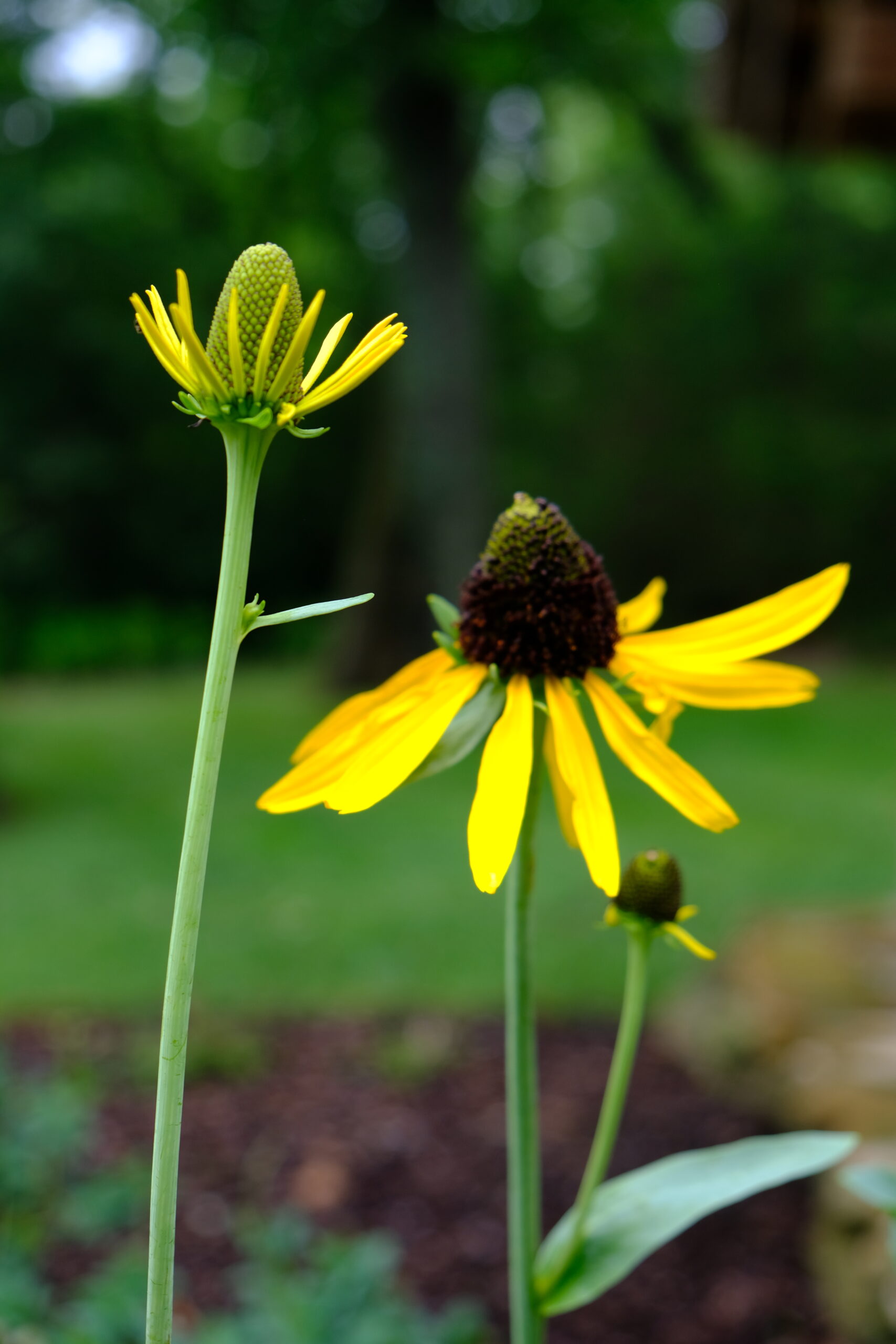
Salvia guaranitica ‘Black and Blue’ (Black and Blue Salvia)
Bloom Time: May to September
Sun Requirement: Part Sun to Full Sun
Water Requirement: Medium
Wildlife: Attracts hummingbirds and bees
Tolerates: Deer tolerant
Native to North America: No
Zones: 7 to 10
Other: This Salvia’s electric blue flowers contrast sharply with the black stems in the summer. It has an upright clumping habit and fragrant dark green leaves.
Location: Bracken Foundation Children’s Garden
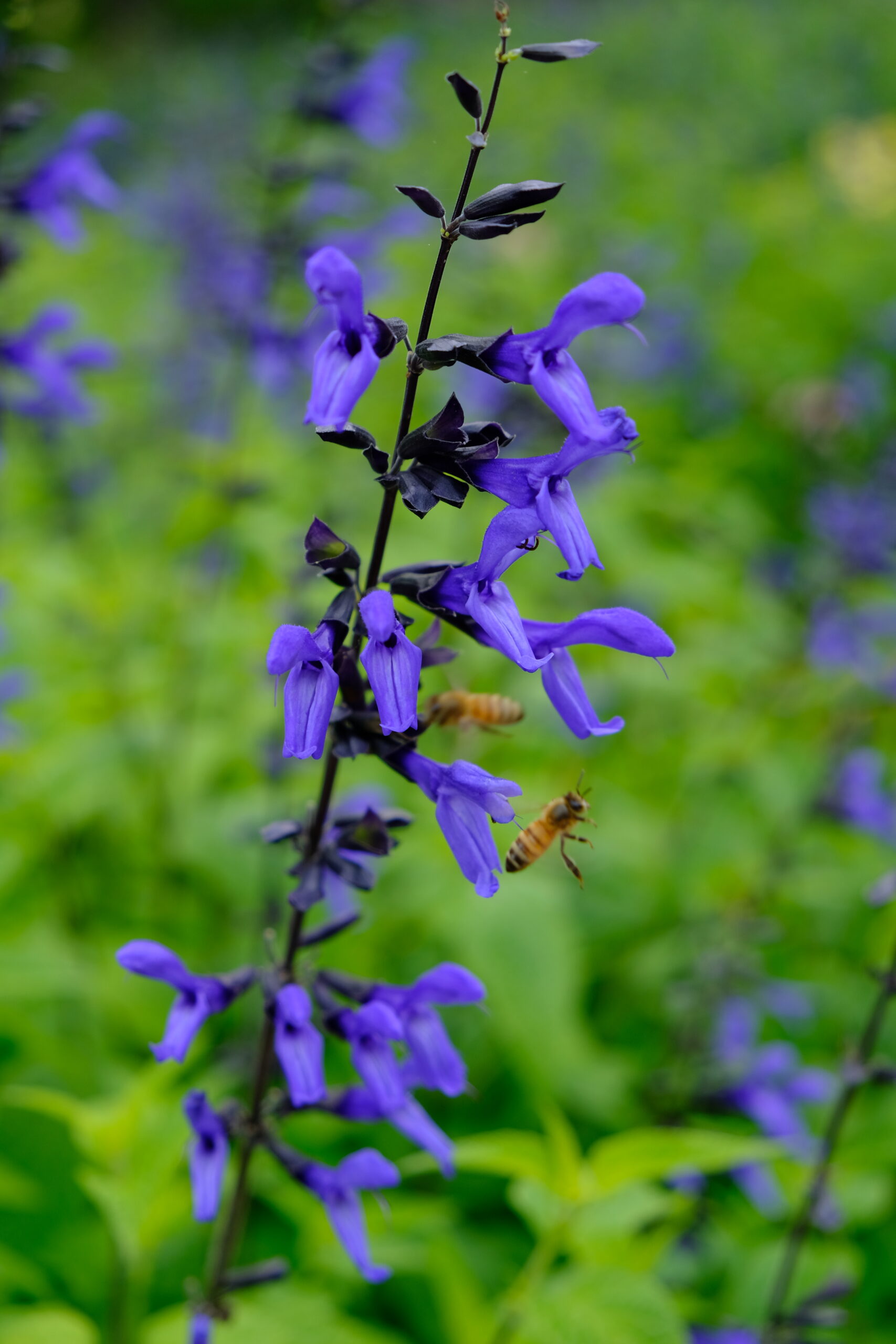
Kniphofia ‘Poco Orange’ (Red Hot Poker)
Bloom Time: June to August
Sun Requirement: Full Sun
Water Requirement: Medium
Wildlife: Attracts hummingbirds, butterflies and bees
Tolerates: Deer, Drought, Rabbit, Dry soil tolerant
Native to North America: No
Zones: 6 to 9
Other: This perennial boasts spikes of tubular, orange to apricot flowers. It is evergreen in mild winters.
Location: Sigourney Cheek Literary Garden
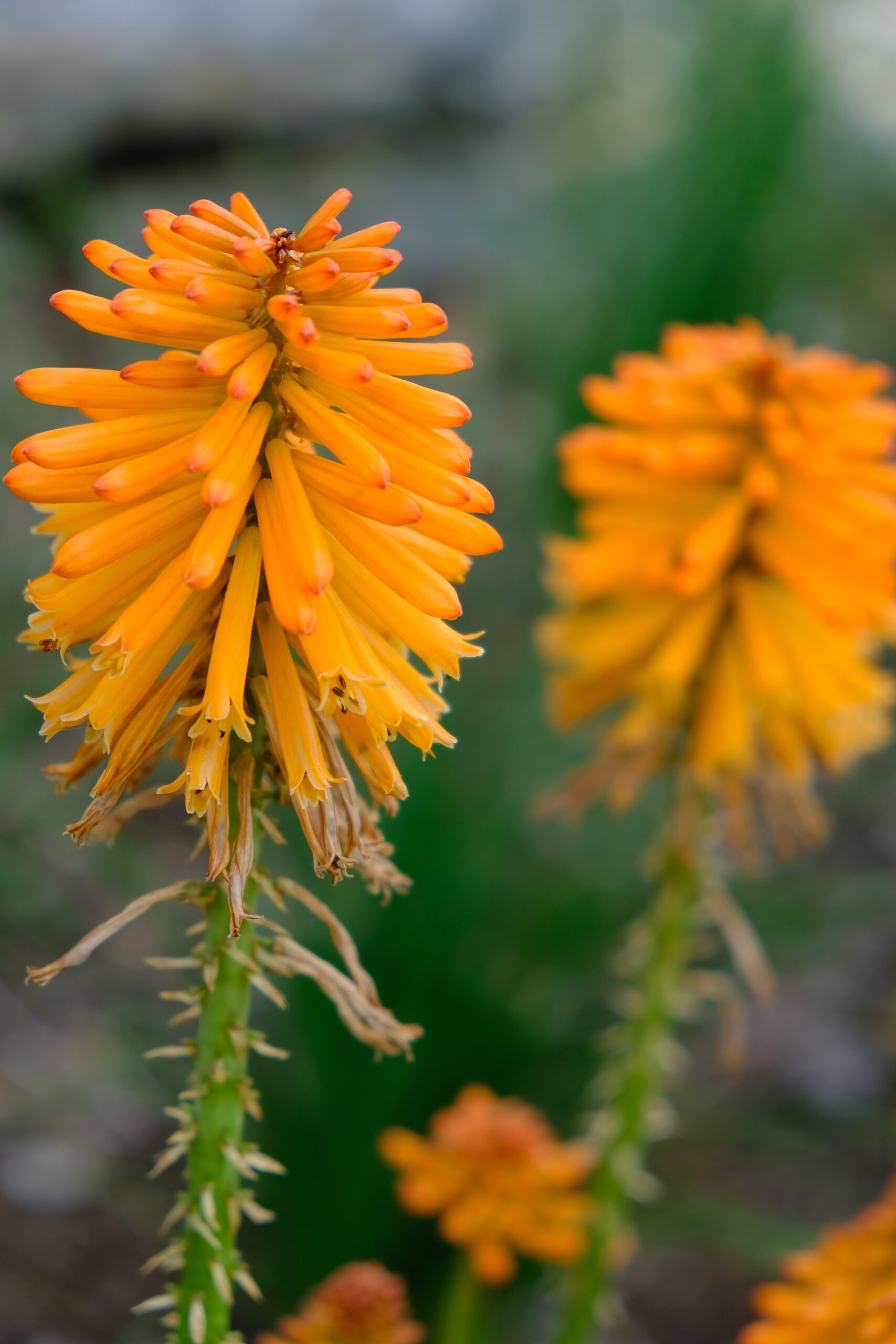
Oenothera lindheimeri (White Gaura)
Bloom Time: June to October
Sun Requirement: Full Sun
Water Requirement: Medium
Wildlife: Attracts bees and butterflies.
Tolerates: Heat and Humidity tolerant
Native to North America: Yes
Zones: 5 to 9
Other: This native clump-forming perennial produces white to pink flowers on arching stems. It is best planted in groups due to its tall wispy habit.
Location: Wills Perennial Garden
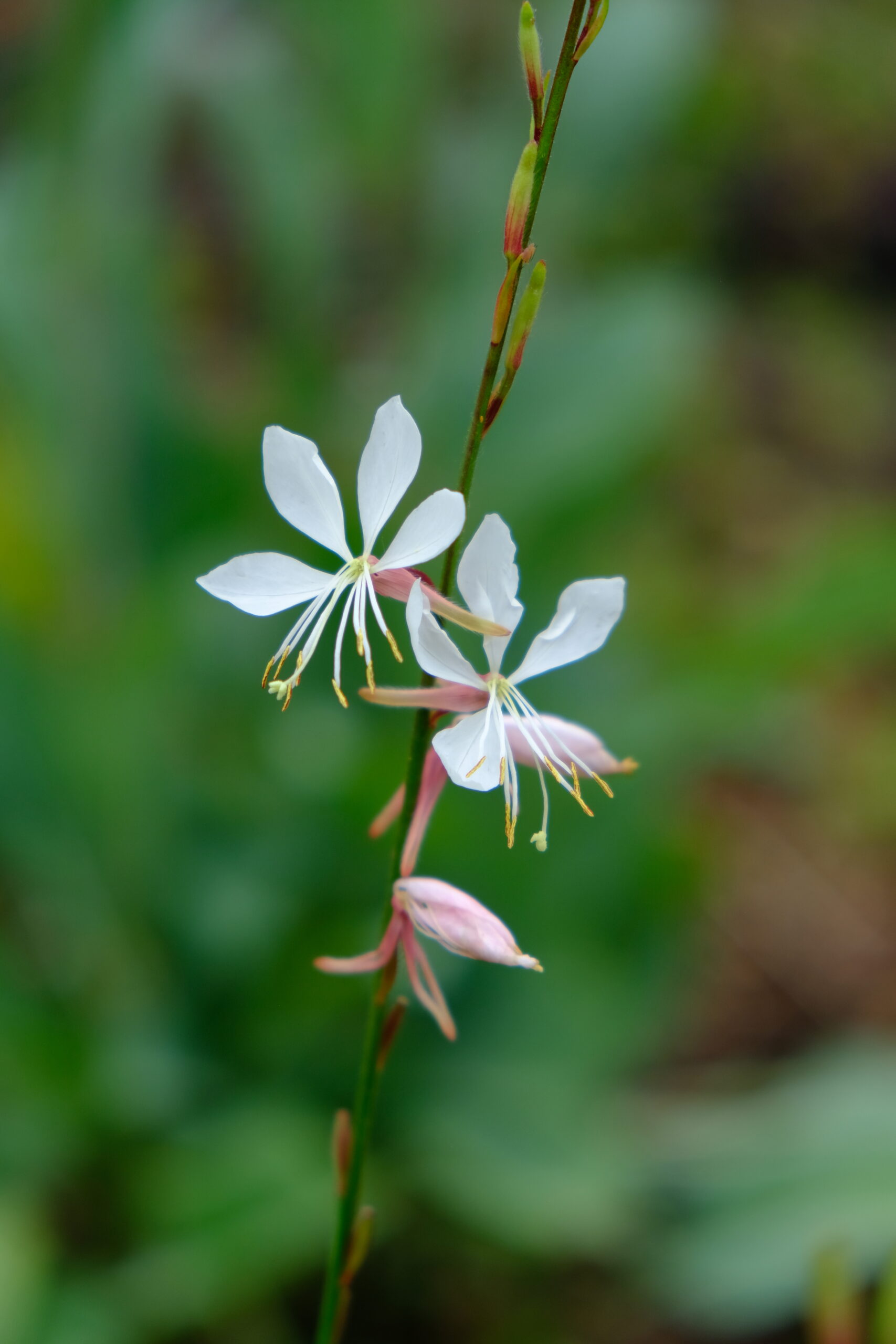
Monarda didyma (Bee Balm)
Bloom Time: June to August
Sun Requirement: Full Sun
Water Requirement: Medium
Wildlife: Attracts hummingbirds and butterflies
Tolerates: Tolerates deer, drought, clay and rocky soils
Native to North America: Yes
Zones: 4 to 9
Other: Bee Balm produces bright scarlet-red flowers on top of square stems. Leaves emit a minty fragrance when crushed.
Location: Herb Garden
